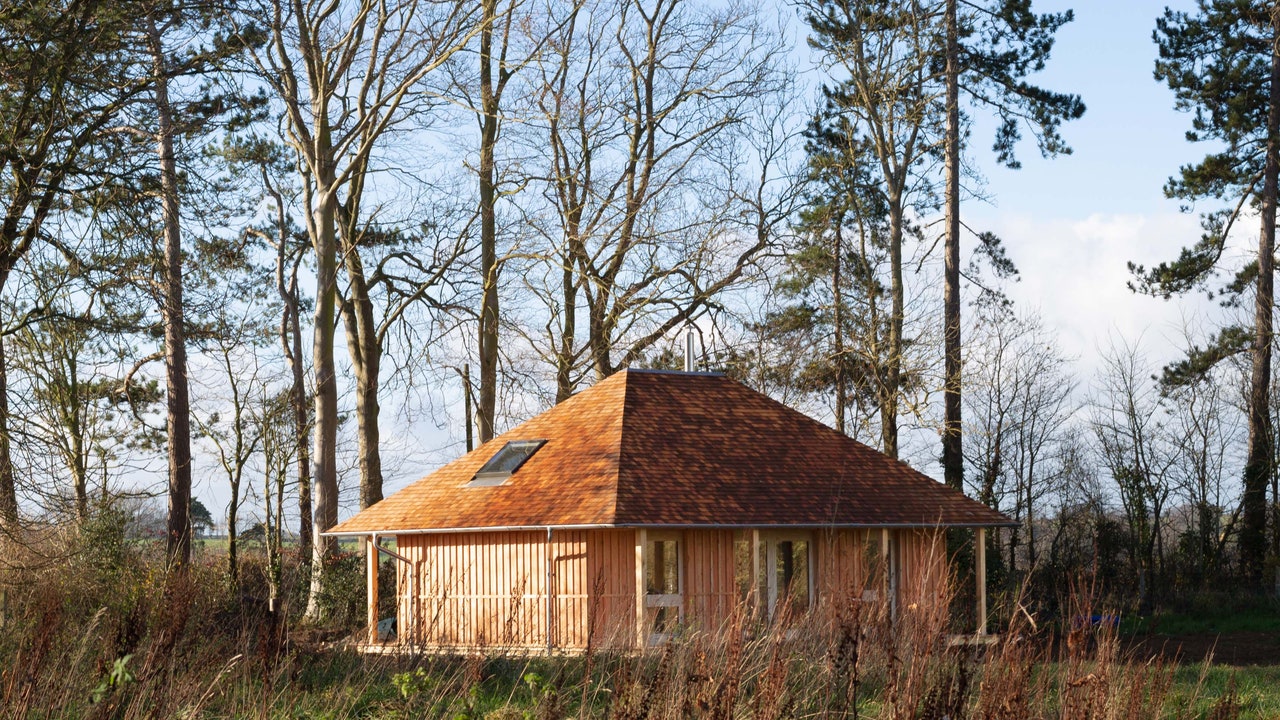Last summer, an East Devon, England, four-bedroom home made headlines when it hit the market for nearly $990,000 (£795,000). Though its price tag might’ve been on the higher end, the buzz was because it’s a cob house. (Or, as DailyMail artfully put it, “a house made of MUD.”) A combination of straw, soil, and clay shaped by hand when wet, cob is a building material that does indeed provide a hardy structure to withstand the elements. Opting for a cob house may also provide some cost savings, as a Montana couple found upon erecting their own cob two-bedroom for a mere $20,000. Though such techniques run counter to the glassy, steely edifices that may come to mind when we think of modern design, firms around the world fabricating with materials like hemp, reed, rammed earth, and timber are building a strong foundation for the future of sustainable architecture.
Radwa Rostrom, founder and CEO of Hand Over Projects, launched her Cairo-based firm in 2016 with the mission of finding a balance between environmentally and socially responsible construction. They primarily use rammed earth—which, for the unfamiliar, is exactly what it sounds like: tightly compacted soils, sometimes made using a mold to create building blocks. The team prioritizes work that will have a positive social impact by taking on contracts to build community centers, schools, medical facilities, “whatever the area needs,” Rostrom tells AD. Though they pick up work across residential, commercial, and public spaces, Rostrom says that her “optimum business model [would be] that we lessen our profit margin from these projects and become able to cover them from our commercial projects.”
Hand Over doesn’t use steel in any of their buildings, instead relying on wall-bearing systems that don’t require columns or beams. The team largely avoids the use of heavy machinery. Instead, they generally depend on human resources—a.k.a. manual ramming. They keep use of cement to a minimum but do incorporate the material (which can have a high environmental impact depending on how it’s produced) as they must, Rostrom explains, depending on what building codes require.
Maintenance is necessary with such structures the way that maintenance is necessary on any “typical” home. “If anything in happens, like a crack forms, or something like that, it can be fixed and it’s a low-cost process,” she says. “In most of our projects, we add a finishing layer of natural materials, like oil or wax or gum, to be reapplied every five years, for example.”
The outcome of Hand Over’s practices is architecture that deals less in embodied carbon. But the work is not without its challenges. Among the drawbacks are very strict timelines imposed when working with real estate developers, who often expect the speedier progress typical of projects that rely on mass production and less sustainable methods, as well as the broader challenge of combatting earthen architecture’s general public perception.


